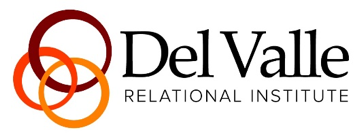The Art of Vulnerability – Dennis Del Valle

The Art of Vulnerability
The importance of vulnerability has been written about extensively by John and Henry over the years. Recently, Brene Brown has ignited our imagination for vulnerability through her books and Ted Talks. These thought leaders have helped us to see that we desperately need vulnerability. But doing vulnerability well is challenging. We see this challenge in many forms: soul crushing isolation; oversharing, which has become a prolific problem through social media; and of course, the hurt caused by people who share with others that which we thought would be kept confidential. Below, I offer three questions to help you navigate vulnerability so that you will enjoy the benefits we hear so much about, while minimizing all that can go wrong. The three simple questions are the Who, What, and Why of vulnerability.
Who – With whom are you being vulnerable?
Why – Why are you being vulnerability?
What – What is it that you are being vulnerable about?
When you are being vulnerable, you need to consider who you are speaking with and adjust your vulnerability accordingly. I offer three general categories for each question. The first is “who.” The three general categories are:
1) Everyone in the world.
2) Those with whom you are building community.
3) An intimate circle.
The second question is the why:
1) For the benefit of others.
2) To build connection, build community.
3) To benefit me.
The third question is the what:
1) Things I have completely processed.
2) Things I have mostly processed.
3) Things I am in process about.
Now I’d like to give you an example of how I can be vulnerable given the three categories I offered above. An example that would fit for category number one is when I’m speaking or writing. I will state, “I find that marriage is painfully difficult.” This is a vulnerable statement that I can speak to the world (who). I am declaring it for the benefit of others (why). This is something I’ve processed. I’m not needing anything from my audience (what). My vulnerable statement answers the three questions for category 1.
Vulnerable statements for people that fit into category 2 are the people I’m building community with, people I go to church with, my neighbors. I might say something like, “One of the struggles in my marriage is communication. I feel like there are times when Kimber and I are speaking a different language to each other.” This vulnerable statement is more specific; I offer more of myself to my community than the general vulnerable statement I made to the world (who). My purpose in sharing is to connect more deeply with those I’m sharing with (why), so I’m more open about the struggle. It is a struggle that I’ve thought about, I’ve processed it, so I don’t need a lot from my audience but it’s very real (what).
Finally, the third category is for a small group of people, my inner circle, my life team. This a small group of people I trust completely (who). Here I share because I need help (why). I’m looking for feedback, support, and comfort. Perhaps, I’m confessing because I need healing. I’m sharing things that I’m in the middle of, unprocessed material that I need help sorting through (what).
The question shouldn’t be, “Should I be vulnerable or should I hold back?” The question that we need to concern ourselves with is how to do vulnerability well. Vulnerability benefits everyone when it is done thoughtfully. Our vulnerable statements help us feel connected to each other, validated in our experience. Vulnerability moves us from isolation to connection. However, through bad experiences with vulnerability, we can easily do it poorly. These three questions and categories will help you engage vulnerably to enjoy the benefits without falling prey to vulnerabilities pitfalls.
Our vulnerability helps us feel connected to each other, validated in our experience and moves us from isolation to connection. In the words of Brene Brown, “Only when we are brave enough to explore the darkness will we discover the infinite power of our light.”
